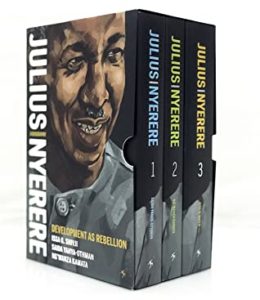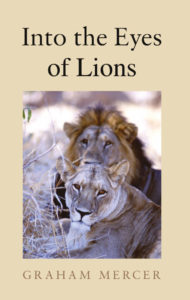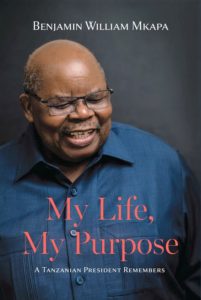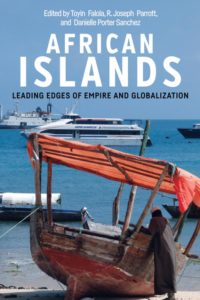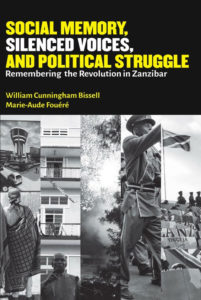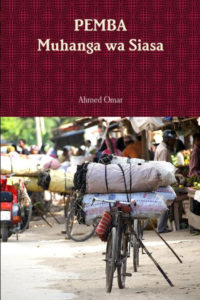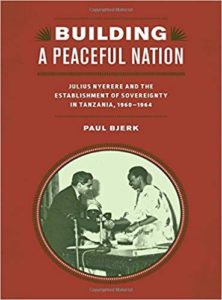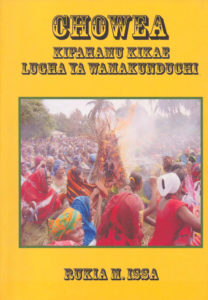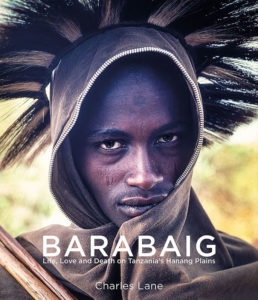by Martin Walsh
MHOLA – THE UTOPIA OF PEACE: AN ETHNOGRAPHIC EXPLORATION OF THE SUNGUSUNGU MOVEMENT IN TANZANIA. Per Brandström. Acta Universitatis Upsaliensis, Uppsala Studies in Cultural Anthropology 59, Uppsala University, Uppsala, 2021. 264 pp. (print and e-book). ISBN: 978-91-513-1114-2. Free download (and print purchase) via http://urn.kb.se/resolve?urn=urn:nbn:se:uu:diva-429533
The Nyamwezi, and their closely related northern neighbours the Sukuma, occupy a large area of rural Tanzania lying to the south of Lake Victoria. Although only approximate population figures are available, they clearly constitute the largest cultural and linguistic group in the country, and the present study suggests that together they may number over 10 million.
The group has attracted a great deal of interest from anthropologists (including myself) and others which has been largely focussed on a remarkable vigilante movement which emerged in the area in the early 1980s. Since then, the village vigilante groups in question – known locally as Sungusungu and as Basalama (‘the people of peace’) – have had a complex history stretching over several decades.
The present study by Dr Per Brandström of Uppsala University attempts to provide a detailed review of the history of Sungusungu and an account of some of the key values in Nyamwezi/Sukuma culture which have lain at the heart of the movement. It is difficult to imagine anyone more fitted to this task. In addition to his fieldwork and his formal academic training as an anthropologist, he has had the further advantage of having lived in the area as the child of Swedish missionaries, and he has deservedly acquired a well-established network of trusting and trustworthy villagers with whom he has been able to engage in full and frank discussion of the main features of the movement.
As his title suggests, Dr Brandström persuasively portrays the fundamental concern of the groups as the maintenance and restoration of mhola, ‘peace’ (within the community and ultimately within oneself and with the world). After a series of disturbances to social order around the beginning of the 1980s, a small group of elders came together on the borders of Kahama and Shinyanga Districts to try to develop a strategy to cope with the threats to local well-being posed by cattle rustlers and bandits and also witches. These last were mainly local older women. The outlines of the story of how the movement subsequently grew and spread like wildfire throughout the area and beyond is by now well known.
As Dr Brandström makes clear, Sungusungu has been a complex and changing phenomenon in the decades since those first beginnings, and as such many different approaches may be and have been legitimately adopted towards understanding it. Also, anthropology itself has multiple agendas, which do not always sit easily with each other, perhaps the most obvious being ethnographic documentation, generalisation and comparative study. Yet, each of these tasks constitutes a fundamental element of the discipline.
With the partial exception of Sufian Bukurura’s PhD dissertation, which is treated in some detail in the text, nobody has previously put together such a rich body of fieldwork material on Sungusungu as is presented here. Dr Brandström’s analysis brings out particularly well the need to recognise the multifaceted character of the material including the significance of communal feasting and sacrificial ritual, in the search for ‘peace’. One is tempted to refer to Max Gluckman’s work on ‘multiplex’ roles and relationships within communities in this context, but this at once risks over-specifying and concretising the different political, economic and religious strands combined in these relations, and an approach through Talcott Parsons’ broad contrast between ‘specificity and diffuseness’ may be preferable. However this may be, we arguably need to be especially careful to avoid what I have elsewhere referred to as an inappropriate sharpening of our analytic chisels when we might do better searching for the unifying glue provided by key cultural values, as Dr Brandström does here!
Overall, it is clear that despite one or two ‘blips’ – for instance on p. 24 he unfortunately misquotes my own discussion of the use of ideal types as reference points in comparative analysis – Dr Brandström has produced a timely and impressive piece of interpretative ethnography which adds substantially to our understanding of Sungusungu and comparable vigilante movements. As such it constitutes a very welcome contribution to the existing literature on these topics.
Ray Abrahams
Ray Abrahams is a Fellow of Churchill College, Cambridge, and a former staff member of the Cambridge Department of Social Anthropology (1963-1998). He carried out field research in the Nyamwezi and Sukuma area of Tanzania in 1957-1960, 1974-75, and 1986. He published an account of Sungusungu in 1987, followed by several papers and a book on vigilantism in comparative perspective (Vigilant Citizens: Vigilantism and the State. Polity Press, Cambridge, 1998).
IMPERIALISM AND DEVELOPMENT: THE EAST AFRICAN GROUNDNUT SCHEME AND ITS LEGACY. Nicholas Westcott. James Currey, Woodbridge, 2020. xvi + 243 pp. (hardback). ISBN: 978-1-84701-2593. £60 (e-book £19.99). Tanzanian Affairs readers can purchase the hardback at the discounted rate of £39 by visiting www.boydellandbrewer.com and entering the code “BB135” at checkout.
The history of the Groundnut Scheme is so overwhelming farcical that the entire episode could easily be fabricated satire. If only it were so. Sadly, this comedy of errors did occur and makes for a deeply tragic tale. Nicholas Westcott expertly unravels the fall and fall of this extraordinarily ambitious project in Tanganyika on its road to becoming the largest, most expensive, and most disastrous development scheme the British Government had ever undertaken. Readers will be quick to draw comparisons to various large scale, government-run megaprojects in the present and recent past that could easily rival this title. This contemporary resonance is well expressed – particularly in the closing chapter, ‘Legacy and Lessons’ – and many governments would do well to learn the lessons still to be taught from the fields of Kongwa, Nachingwea, and Urambo.
In response to a global fats and oils shortage after World War II the scheme set out to convert three million acres of bush into the largest mechanized groundnut farm in the world. The scheme swallowed up the equivalent of £1 billion in four years (1946-50) and was not only a catastrophic failure but a political scandal. That’s the story in a nutshell, at least. But this was a complex chapter in Britain and Tanganyika’s shared history, and the intricacies of the saga are exposed in ‘Imperialism and Development’ through an impressive balance of engaging narrative and serious research. Westcott draws from a variety of sources to detail with precision how Britain set out to utilise the soil of its eroding empire to curb a potential margarine famine.
Westcott asks and answers several key questions. What happened? Why did things go so terribly wrong despite the inspiration and effort poured into it? How did this reflect the imperial project in the mid-twentieth century? What does it tell us about agricultural development and its transformation in Africa? And are there lessons we can learn of relevance today?
This was a remarkable failure that has received little scholarly attention despite its infamy. The expense (then £36 million) was written off after the project went from bad to worse, ultimately producing nothing. The most worrying realisation from reading the book is how little has changed. Although it is hoped that at the very least, the lesson of ‘do not plant seeds where it doesn’t rain’ has been largely learned.
Westcott’s likening of this development disaster to a Greek tragedy is apt, and this is a ripping good read. It conjures up the atmosphere of the time and anyone who had friends or relations who were ‘Groundnutters’ will get a very clear impression of the scheme.
Nicholas Westcott is well qualified to spin this particular yarn with wit and academic aplomb. He first encountered files on the scheme at the National Archives (UK) in the late 1970s while a doctoral student at the University of Cambridge, then writing a thesis on The Impact of the Second World War on Tanganyika, 1939–1951. This book has therefore enjoyed a particularly long gestation which accounts for its richness. Westcott will be well known to readers as the incumbent Director of the Royal African Society (since 2017) and draws insights from over three decades of diplomatic service, many of which were spent in Africa (including as High Commissioner to Ghana, 2008-11).
Jonathan M. Jackson
Jonathan M. Jackson is a doctoral student at the University of Cologne and is part of the German Research Foundation-funded Collaborative Research Centre 228: ‘Future Rural Africa’ (https://www.crc228.de). His thesis – Past Futures: Histories of Development in the Kilombero Valley, Tanzania – will be submitted this year. He holds degrees from the University of Oxford (MSc, African Studies) and SOAS (BA, History and Swahili).
THE BOY FROM BOSKOVICE: A FATHER’S SECRET LIFE. Vicky Unwin. Unbound, London, 2021. xiii + 324 pp. (hardback). ISBN: 9781783529063. £25.
To many colonial officials who worked in Tanzania during the last days of British rule, the name of Tom Unwin was very familiar. So too to many UN officials working in development during the 1960s and ‘70s. He was a gregarious character, great company, full of tales, and to all intents and purposes a quintessential Englishman.
But appearances can deceive. Drawing on a wealth of family papers and letters left to her when her mother died, his daughter, Vicky Unwin, has pieced together an extraordinary story of a man who completely reinvented himself. Arriving with his mother as a Jewish refugee in England at the outbreak of war, the lost ‘boy from Boskovice’ swiftly buried his past, adopted his new country and a new personality, and after impressive war service, became first a ‘Groundnutter’ and then colonial official in Tanganyika (as it then was), before working as a senior and influential UN official in South-east Asia for many years before his retirement in 1997. Like a chameleon, he had the capacity to adapt and blend effortlessly into his environment, with scarcely a backward glance at a past that became increasingly complicated as he slipped not only from one country to another but from one relationship to another.
Vicky Unwin’s account is fascinating as she uncovers secret after secret about her own father, able at last to challenge him with some of the secrets while he was still alive. It is worth the read for this story alone, which keeps you gripped to the end.
But for readers of Tanzanian Affairs it is the four chapters covering his time in Tanzania, from 1947 to 1964, that will hold most interest. He and his wife Sheila (Vicky’s mother) were among the first recruits to the infamous Groundnut Scheme and some of the very few who stayed with it until almost the end. The account here therefore has a real value in illuminating the workings of this hopelessly over-ambitious development scheme that promised to transform the country’s agriculture but which failed so spectacularly, it helped bring down Attlee’s government in 1951.
As the fate of the scheme became clear, Tom Unwin skipped lightly from farming to colonial administration, and became a District Officer successively in Mikindani, Mwanza, Tukuyu and finally District Commissioner in Kilwa – where they were visited, amongst many others, by the novelist Evelyn Waugh and became friendly (in Sheila’s case, very friendly) with the charming doyen of East African archaeologists, Neville Chittick.
From there he was transferred to Dar es Salaam and, as a member of the Secretariat, was given a job in the office of the new Prime Minister, Julius Nyerere, who later appointed him as the first Permanent Secretary of the Tanzanian Foreign Ministry. It is clear that his working relationship with Nyerere was both friendly and fruitful, and it would have been interesting to hear more about how he became such a trusted member of the PM’s senior team in so short a time – a testament to his charisma, competence and impeccable Swahili. But the account is understandably more from Vicky’s perspective as a young expat child in Dar at the dawn of independence.
Sadly, after the attempted coup and the union with Zanzibar in 1964, the last white officials were withdrawn. Tom Unwin returned to Britain and his career, and family life, followed other paths to other places.
In some ways the story of Tom Unwin is characteristic of Britain’s whole relationship with Africa: deeply committed, even affectionate, while there, not entirely understanding why it all came to an end, but then moving on to other places and other challenges, while a new generation of young Britons engaged with Africa in a very different way. This book provides one perspective on Britain’s past, well-written and fascinating in its own way. A recommended read.
Nick Westcott
Nick Westcott is Director of the Royal African Society and a Research Associate at SOAS. He first visited Tanzania in the 1970s, spending a year at the University of Dar es Salaam while studying for his PhD, then returned as the British Deputy High Commissioner in the 1990s, before being appointed Britain’s High Commissioner to Ghana in 2008-11. His history of the Groundnut Scheme is reviewed elsewhere in this issue.

